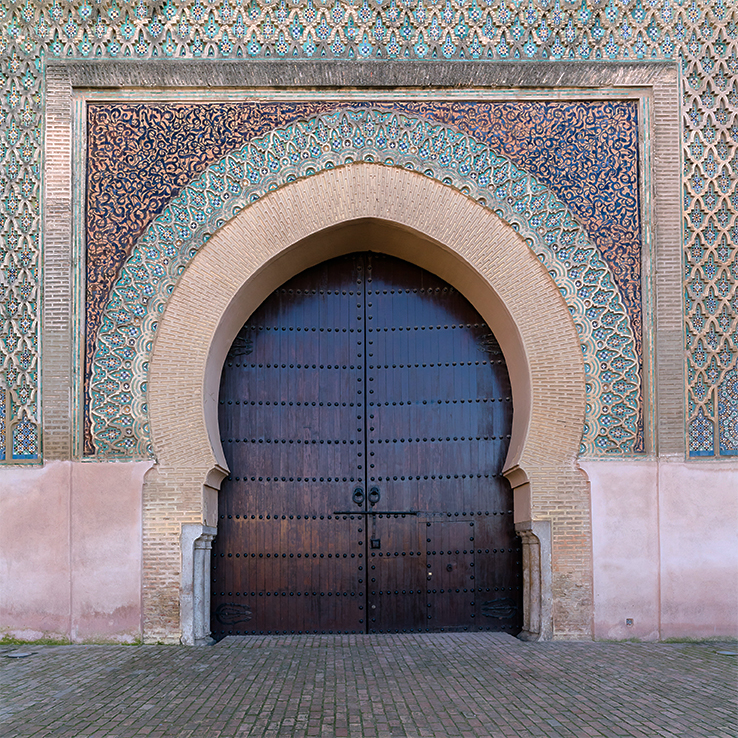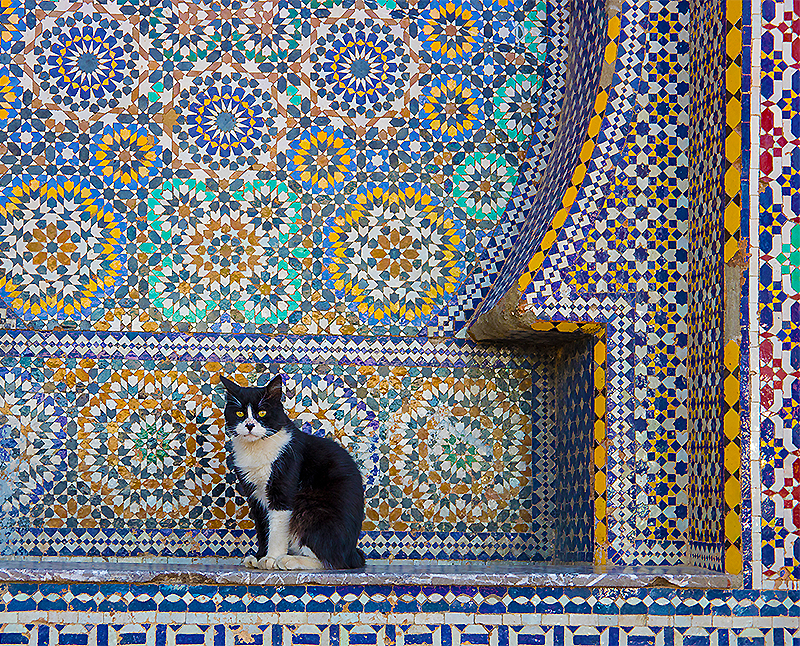
The gateway is lavishly decorated with zillij (ceramic mosaic) tiles. Each zillij tile is hand cut, individually chiseled geometric tiles set into a plaster base. Design elements include elaborate geometric patterns and ornamental Islamic calligraphy of Quranic verses.
Fez and Meknes are the production centers for zillij tiles due to the Miocene grey clay found in the Fez area. The clay from this region is primarily composed of Kaolinite. For Fez and Meknes, the clay composition is 2-56% clay minerals.
For centuries, the country has been influenced by a mix of cultures from African tribes, to its Arab neighbors, to European traders and colonizers. This dynamic combination has created a unique culture that is reflected in the country’s architectural style. Yet, even though different design elements are found in buildings throughout Morocco, the strongest influence in its architecture remains Islam. Indeed, the specific decoration guidelines of Islam have been used to direct the construction and ornamentation of buildings in Morocco for centuries.

This is a form of traditional Islamic art was and remains a hallmark of Moroccan architecture.